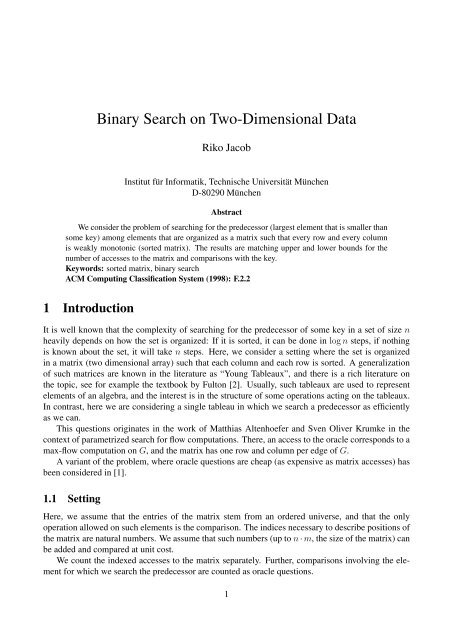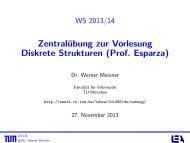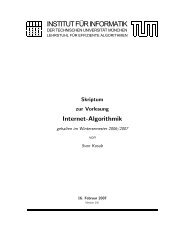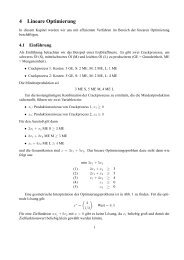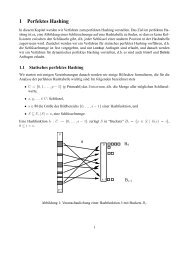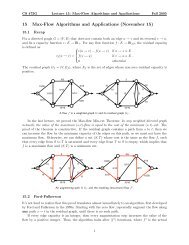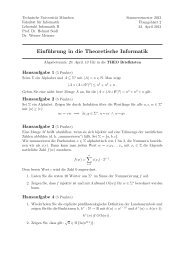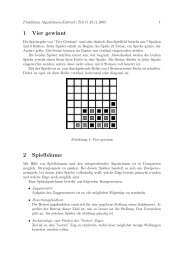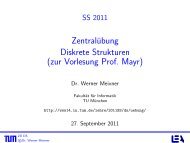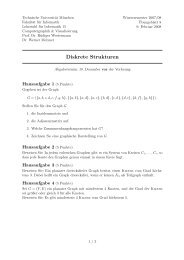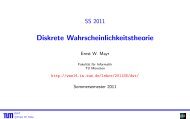ABCDE FGHIJ KLMNO
ABCDE FGHIJ KLMNO
ABCDE FGHIJ KLMNO
- No tags were found...
Create successful ePaper yourself
Turn your PDF publications into a flip-book with our unique Google optimized e-Paper software.
Binary Search on Two-Dimensional DataRiko JacobInstitut für Informatik, Technische Universität MünchenD-80290 MünchenAbstractWe consider the problem of searching for the predecessor (largest element that is smaller thansome key) among elements that are organized as a matrix such that every row and every columnis weakly monotonic (sorted matrix). The results are matching upper and lower bounds for thenumber of accesses to the matrix and comparisons with the key.Keywords: sorted matrix, binary searchACM Computing Classification System (1998): F.2.21 IntroductionIt is well known that the complexity of searching for the predecessor of some key in a set of size nheavily depends on how the set is organized: If it is sorted, it can be done in log n steps, if nothingis known about the set, it will take n steps. Here, we consider a setting where the set is organizedin a matrix (two dimensional array) such that each column and each row is sorted. A generalizationof such matrices are known in the literature as “Young Tableaux”, and there is a rich literature onthe topic, see for example the textbook by Fulton [2]. Usually, such tableaux are used to representelements of an algebra, and the interest is in the structure of some operations acting on the tableaux.In contrast, here we are considering a single tableau in which we search a predecessor as efficientlyas we can.This questions originates in the work of Matthias Altenhoefer and Sven Oliver Krumke in thecontext of parametrized search for flow computations. There, an access to the oracle corresponds to amax-flow computation on G, and the matrix has one row and column per edge of G.A variant of the problem, where oracle questions are cheap (as expensive as matrix accesses) hasbeen considered in [1].1.1 SettingHere, we assume that the entries of the matrix stem from an ordered universe, and that the onlyoperation allowed on such elements is the comparison. The indices necessary to describe positions ofthe matrix are natural numbers. We assume that such numbers (up to n · m, the size of the matrix) canbe added and compared at unit cost.We count the indexed accesses to the matrix separately. Further, comparisons involving the elementfor which we search the predecessor are counted as oracle questions.1


